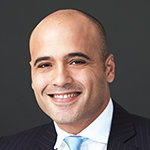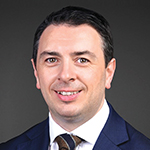The opportunities in emerging markets

|
Written By: Pádraig Floyd |
Pádraig Floyd surveys the attractions of different emerging markets and discusses their current investment potential with senior professionals in the field
An old Chinese curse wishes the recipient may live in “interesting times”. While that is perhaps as euphemistically vague as the notion of “negative returns”, this year has certainly been interesting from an investment point of view.
Emerging markets offer a wealth of opportunities, not least for growth and portfolio diversification. For two decades, they have performed well. But as investors integrate environmental social and governance (ESG) criteria into their investment strategies while positioning themselves for rising inflation and interest rates, what is the role of emerging markets in the face of the changes underway in portfolios?
The amount of growth of emerging markets over 20 to 30 years has been “incredible”, says James Johnstone, co-head of the emerging and frontier markets team at Redwheel. “China has gone from being an economy smaller than Holland, to being the second largest in the world. Several 100 million people were taken out of poverty in China, and about two billion people around the world,” he says.
There was huge growth through to 2012, though he sees subsequent market performance as being “pretty disappointing”, with the emerging market index being flat for the last decade, largely in relation to the huge performance of predominately technology stocks driven by the US.
It’s people power, you know
But there is a “wonderful demographic profile” in many of the emerging markets like India and parts of Africa, which is in stark contrast to a lot of the ageing population sets in the developed world – Japan and Germany being two of the most obvious examples.
To put this into perspective, EMs are responsible for 50% of the world’s GDP, more than 80% of the world’s potential GDP growth and well over 75% of the world’s population growth as well.
In terms of market cap, EMs make up between 35% to 40% of world indices about 20%, yet it only makes up 5% of portfolios. But this “lack” of interest in EMs is not going to last, says Johnstone, as the fiscal and monetary policies make the cost of capital prohibitively expensive.
“We think that emerging markets will continue to have this stronger growth profile. They’ll attract capital as they begin to show that the relative valuation and in essence, the West is going to have to spend three to five years tightening fiscal and monetary policy to pay for the amount of policy compensation for Covid at the same time that emerging markets are beginning to emerge from a period of tighter policy.”
Get your strategy right
The strategic view of EM weight to equities is very important, says Colin Cartwright, partner in the investment practice at Aon Hewitt. Some clients are deciding to stay where they are, others trimming or bringing that weighting down, or at least rebalancing to their strategic weight and then looking to trim.
“If you look at what’s happened in markets this year, all we’ve really done is given up last year’s performance,” says Cartwright, as they’ve been very strong since the financial crisis.
He sees more clients considering that an emerging market allocation is sensible within equities, and he believes active is the correct approach, with around 10% of equity allocations being through a dedicated EM manager.
“We still think there are options to add value in EM,” says Cartwright. “EM is a broad church that covers a wide area. China is massive, Russia has its own problems, Latin America – and depending on whose definition you use – places like Korea and Israel may be included.”
Cartwright believes an active manager should add value over time, but acknowledges increased complexity, as old fashioned risk and reward approaches must now be overlaid with climate and ESG responsibilities.
“That does become a little bit more difficult, because emerging markets tend to be higher carbon intensity than developed markets,” says Cartwright. “The indices do have a lot of minor energy and resources type stocks, as that’s the nature of emerging market share. So you have to determine how you factor ESG goals and decarbonisation plans into the strategies.”
It’s not what you know, but who you trust
You can make portfolios look a lot better by carving out – or cutting – your EM allocation, says Pete Drewienkiewicz, CIO, global assets at Redington, but acknowledges that local authorities are in a “more engage than exclude headspace”.
“But management is definitely being tested on its ESG credentials, and particularly on their engagement.”
Investors are looking at the manager’s position with regard to UNPRI, but are also wanting to see evidence of the engagements they cite.
Russia has made some more nervous about the China/Taiwan situation, which has escalated in recent weeks. Though Drewienkiewicz thinks an invasion is not likely this decade, clients are starting to make changes.
“We’re seeing some demand for people breaking up their China mandate,” says Drewienkiewicz, with the main reason being to prevent an allocation “polluting” the EM allocation.
The second rationale is for looking for specialists: “There is a big trend towards EM specialist managers with people being asked to show their credentials for an ex-China capability.”
China is such a big part of EM, some managers may not be able to cope with that, says Drewienkiewicz, while those with a big China play may have to consider rebranding as specialists. This will have its own problems.
“China specialists, will be increasingly quizzed on any ESG claims they make. They will have to demonstrate they are credible, evidenced, and show to clients just ow much of that is ESG policy. It’s a very interesting question.”
But equities isn’t the only game in town. There is a rapidly changing landscape within fixed income investment opportunities in emerging market economies.
If it ain’t fixed, it’s broken
There has been a dramatic increase in interest in impact-oriented strategies in emerging markets over the past 12 months, driven by the huge potential positive impact and attractive returns on offer in the asset class, says Simon Cooke, portfolio manager at Insight Investments.
The scope for positive change is huge, as EMs make up 85% of the world’s population, including 99% of the world’s poorest people, and over 70% of whom are reliant on fossil fuels for energy today.
“The need in developing nations is huge. Debt markets are set to be the primary provider of private capital,” says Cooke, who sees an opportunity to support and drive climate change mitigation and adaptation through green bonds issuers whose business models tackles climate change, and issuers who have set transformational targets to reduce their negative impact.
“By allocating to emerging markets, investors can capture the structural risk premium on offer alongside fundamental and sustainability improvement,” says Cooke.
“Bondholders are the principal provider of public capital to emerging market corporate issuers, as more than 60% of issuers have no publicly listed equity. That places us in a position to partner with issuers over the long term to support improvements in creditworthiness, sustainability and impact, working together with issuers to identify potential areas for change.”
ESG 2.0 developed in EMD
ESG in the EM fixed income arena made slow progress, as managers built funds that only had a very light green tinge to them. However, the last year has seen investors identify the scope for the transition. So rather than excluding the bad companies, investors are seeking to direct capital towards those either delivering impact today or which will deliver impact over the years to come.
“It’s kind of a growth in article nine versus article eight,” says Cooke. “And that is, if anything, a better place to be when you’re thinking about EM, because emerging markets are evolving.”
That’s because it covers the board in terms of environmental sustainability, social inclusivity or communal prosperity, not just fundamentals.
Investors are moving from just seeking financial returns, says Cooke. EM still offers more attractive financial returns over the long term with high Sharpe ratios, so it should be part of someone’s allocation. The removal of the “naughty companies” didn’t deliver exactly what people wanted in an environment where ESG standards are so variable.
“This is where you’ve got a kind of ESG 2.0, where people want to combine financial returns, positive impact and emerging markets,” says Cooke. And positive impacts in a way that may be “unparalleled in fixed income”.
“It’s possibly a paradigm shift,” he adds.
Cooke is largely speaking of corporates, but there has also been an explosion of emerging markets sovereigns in impact bonds. Not to the same extent, but they were the early movers. But it’s more complicated, and the place where you can demonstrate impact today – and where the impact opportunity exists now – is in the corporate universe with some kind of past allocation to the sovereign impact bonds.
Paradigm shift, indeed
Companies are meeting investors halfway, says Johnstone, as “the vast majority – and I’m talking 99%” of the 5,000 companies Redwheel visits a year have a very intense ESG section in their corporate results, their presentations, their reports and accounts.
“We have achieved an incredibly quick move towards these very high levels of transparency and governance,” adds Johnstone. “The world has done a very good job in getting the corporate world to make that decision.”
But there are more numbers to focus on, particularly for those seeking a just transition, rather than a superficial “clean hands” policy through divestment. More than 70% of EMs are reliant on fossil fuel energy, and EMs produce more than 75% of the world’s carbon emissions. Yet these are the markets where there is the greatest inequality, because 99% of the world’s poorest people are found in EMs.
“That’s where you need to direct capital for transition to help support a more sustainable environment, for more social inclusivity and better communal prosperity,” adds Cooke.
And that, ultimately, is where developed markets are going to have to put their money if ESG is truly an organisational goal, rather than a regulatory hurdle.
More Related Content...
|
|
|




